Customer success and support should be the priority of any business that has any value in their buyers. It all ties back to the bigger goal – improving the customer experience.
One of the best tactics to support customers is through knowledge management.
What Is Knowledge Management?
Knowledge management is the process of identifying, storing, and sharing an organization’s information.
It sounds incredibly technical and tedious, but it’s pretty important to your customers' success.
The Importance of Knowledge Management
Knowledge management can help your business in a variety of ways, from organization to documentation. Here are a few advantages to creating a knowledge management system:
Efficiently Onboard New Employees
Joining a new organization and getting up to speed quickly can be a difficult task, especially if the organization has a lot of information. It’s even harder if there isn’t an organized system where you can access that info.
Creating an internal knowledge management system will make onboarding new employees a lot easier and efficient. They'll have a go-to place to find help before reaching out to another team member.
Shorter Wait Times
Customers appreciate having access to help on their own terms and in their own time. Not everyone has the time to call customer support for hours explaining their problem.
If a customer knows exactly what answer they're looking for, they'll have a much faster, easier time finding it using your knowledge management system.
That frees up your customer service phone lines and decreases the number of service tickets submitted, providing shorter wait times for those who really need to talk to your team.
In-Depth Customer Assistance
Everyone has their own, unique way of learning. Using your knowledge management system, customers will have access to various educational media that will provide them with detailed answers to their questions.
What Is a Knowledge Management System (KMS)?
Knowledge management systems are IT systems meant to store and retrieve data that educates and improves process alignment. Even though they usually operate within organizations, the bulk of their user base is composed of customers.
These systems can vary in type, but they all share the same purpose of providing answers and information. Some of the more popular types are:
- Frequently Asked Questions (FAQs)
- Tutorials and how-to articles
- Webinars
- Case studies
- Training programs
How to Create Your Knowledge Management System
Building a KMS can be a pretty long process, but it's well worth the effort when you consider how much value it will provide to your customers and employees.
Here's how to build an effective knowledge management system:
1. Collect All Appropriate Data.
In order to know what information to include, you'll have to figure out what information people are looking for.
Look through your support tickets and talk with your team to figure out what common customer issues are. The more frequently brought up problems should be addressed first.
Google Analytics and social listening are also great ways to investigate and collect data on what questions your audience needs answers for.
2. Segment and Organize the Information.
By segmenting subjects, you'll be able to categorize information under umbrella topics that will make searching for answers easier.
Organization is key to ensuring your KMS actually does its job of helping people find resources.
Break topic categories between four to six segments and put emphasis on the more frequently used resources and blog posts. Include quick links to popular topics and categories.
Even though the design and structure of your system can vary, it's still very important that users are able to navigate it easily and with minimal confusion.
3. Analyze Efficiency and Effectiveness.
Always, always, always look into the performance of any campaign, strategy, or tool that you implement for your business' benefit.
Utilize customer satisfaction surveys to learn how effective your system has been in aiding customers during their hunt for answers.
Even monitoring bounce rates and page session times will let you know what's useful and what isn't.
4. Optimize the KMS Regularly.
Continually updating your knowledge management system for optimization purposes guarantees that you'll always be providing value and information to your customers and internal teams.
New questions about your business can appear over time, and you'll need to introduce them into your KMS when you recognize them as common issues.
You can also include feedback forms where users can submit questions that aren't mentioned or need more context in your system. Flip that feedback into action by addressing them quickly and comprehensively.
Knowledge Management Tools
There's actually a lot of software out there designed to help you build or improve a useful knowledge management system. Leveraging the right tools will always save you time and resources.
Here are five great knowledge management tools that can help improve your KMS experience:
1. Yonyx
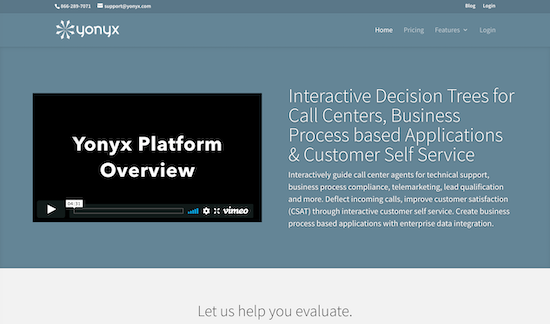
Yonyx is a cloud-based platform that offers users the ability to create guides, or "decision trees," that customer service teams can interact with. The aim is to improve consistency and service quality through organization and support.
The platform is aimed more toward call centers, but the CRM integration capabilities make it an excellent tool for helping internal teams.
Price: Plans start at $100/mo. for five users.
2. EduBrite
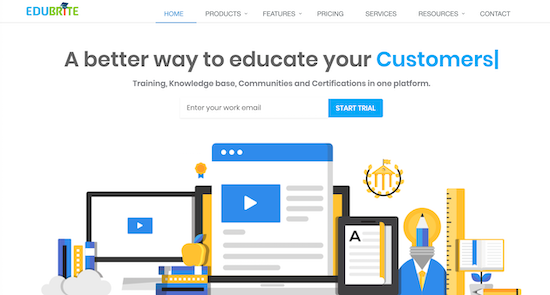
EduBrite's platform is advertised as a learning management system that allows organizations to provide training programs for customers, employees, and partners alike.
With an easy content editor, users can custom build courses by importing media. Users can create assessments, certifications, and integrate with other products like Altassian Confluence and Citix.
Cloud based and mobile-friendly, the system monitors all activities and offers comprehensive reporting.
Price: Plans start at $399/mo. for 100 users.
3. Shelf
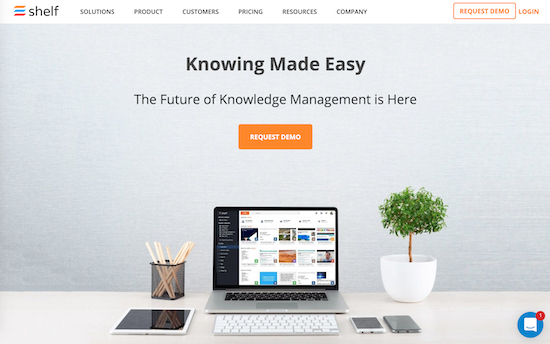
Shelf acts as a help and contact center for organizations. Using advanced AI, users can document incredible amounts of data and retrieve documentation quickly.
AI automation performs regular maintenance and analytics, providing accurate reporting and organization.
With an easy-to-use interface and collaborative, customizable features, it's a popular platform among organizations like Google and Amazon.
Price: Plans start at $99/mo.
4. Slab
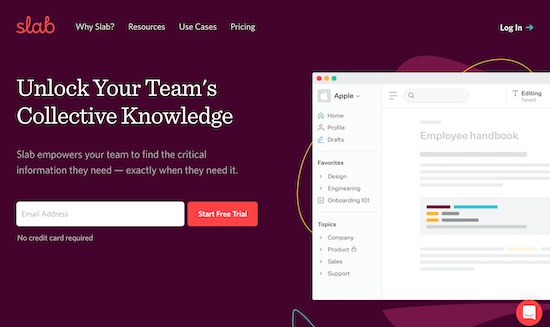
Slab is a platform that offers users the opportunity to build their own wiki system. Its cloud-based content management systems are easy to use and meant for long-term knowledge management.
Editing is easy and collaborative and organization is incredibly customizable. Users can integrate with other products like Slack, GSuite, and Asana.
Price: Plans start at $35/mo. for 10 users.
5. Support Hero
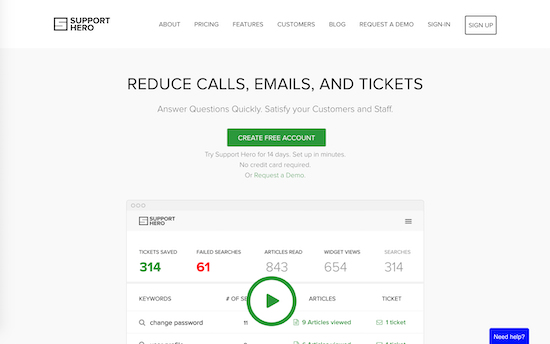
Support Hero is designed to reduce the amount of support tickets you receive in a day through knowledge management in a unique app.
Users can create articles, tutorials, FAQs, and other knowledge base resources to help aid customers. The platform provides reporting on what customers are looking for and where content can be improved, allowing for regular optimization as well.
Organizations can provide 24/7 aid to customers directly in-app and on their website by embedding HelpCenter into their codes.
Price: After a two week free trial, plans begin at $49/mo. for one user.
Knowledge Management System Examples
There are a few organizations who are absolutely killing the help center game with their unique KMS. What makes them stand out is just how thorough their knowledge base is and how aligned their systems are with their business and branding.
Amazon
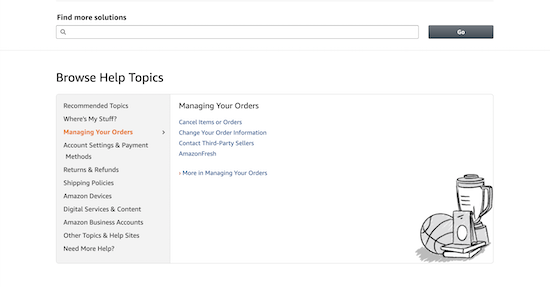
Source: Amazon
As an enormous ecommerce company, Amazon gets thousands of support requests a day. To solve that volume problem, the company has built a pretty comprehensive KMS that covers everything from shipping to vendor assistance.
Categorizing articles and resources by topic, they recommend common questions to users and offer a search bar for specific questions.
Evernote
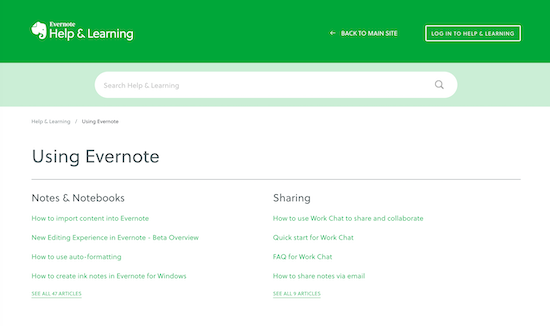
Source: Evernote
Evernote's knowledge management system is so sleek and organized that it's almost too easy to find what you need.
With a bubble search bar and meticulous linking to every aspect of Evernote's business, customers can navigate the help center without any hiccups or confusion.
(Also it just looks so pretty.)
RStudio
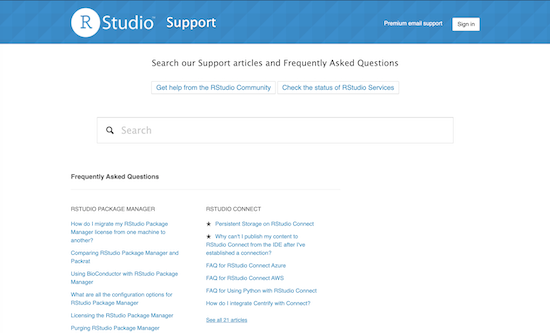
Source: RStudio
RStudio also has a pretty organized KMS, but it differs from the others in the sense that it's more community focused. Users are encouraged to post and answer questions, engaging with one another.
The help center also includes tutorials and trainings for new users who are just starting to get familiar with the company's incredibly technical product.
How Are You Supporting Customer Success?
Knowledge management delivers a ton of benefits that directly influence your customers' experience. By leveraging different means to emphasize how much you value your customers, you’ll have a much easier time building customer loyalty.
Find the right tools and start building a knowledge management process that’s going to help your customers succeed.

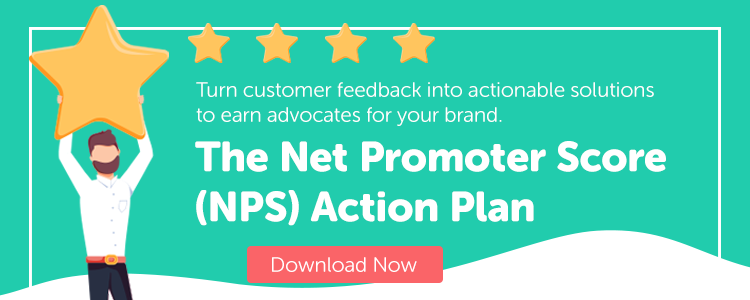
Micah Lally
I’m a Content Writer at Bluleadz. I’m a big fan of books, movies, music, video games, and the ocean. It sounds impossible to do all of those at the same time, but you’d be surprised by the things I can accomplish.